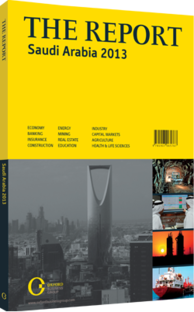On track: Development projects under way to improve movement
The government is committing vast resources to transportation infrastructure in many regions around the Kingdom. Jeddah is perhaps seeing the benefits of this spending more than anywhere else: alongside multiphase expansion plans for the international airport and Jeddah Islamic Port, Jeddah’s land transportation is witnessing unprecedented development.
High-Speed Rail
Pilgrims en route to Makkah, tourists from around the Gulf, businesspeople heading from Jeddah to multibillion-dollar economic cities nearby – all of these are set to gain from one of the region’s most ambitious transportation projects: a high-speed passenger rail. If all goes to plan, by early 2014 the rail line, dubbed Al Haramain (which means “the two holy cities”), will ferry passengers between Medina and Makkah, passing via the King Abdullah Economic City, the King Abdulaziz International Airport and Jeddah itself. Given the size and duration of the project – around $10.6bn for phases I and II together, spread over more than five years of work – it is not surprising that there have been some delays. At the time of writing, construction on phase II was imminent, despite the fact that the transition between phases I and II had been slower than planned. Still, the target remains 2014.
Foreign firms are playing a considerable role in the project. For instance, a consortium of Saudi, Chinese and French companies is carrying out the civil works (phase I), while a Saudi-Spanish consortium has been charged with construction of the track, rolling stock, signalling and electrification (phase II).
Metro
While Al Haramain will undoubtedly bring benefits to Jeddah’s hospitality and retail sectors, it is primarily there to serve visiting pilgrims. An upcoming project that residents are perhaps more eagerly anticipating is a metro. “This has been long promised,” Ahmed Zawawi, director of strategic planning at the Jeddah Chamber of Commerce and Industry (JCCI), told OBG. “A metro would of course speed up transportation in the city, but it would also help take a large number of cars off the roads, thereby reducing congestion and pollution, as well as providing relief with regard to the serious lack of parking in central districts.”
Plans are still to be finalised, and the government has not made any promises as to when work will begin or end. Expectations in Jeddah will certainly be high, especially as the government has in 2012 approved a plan to build a metro in Makkah, as well as pre-qualifying four consortia for a metro in Riyadh.
Momentum for the Jeddah metro is gathering. In August 2012 the municipality told press that initial studies were being completed and that a tender was soon to be released. When OBG visited towards the end of 2012, further progress appeared to have been made. “The initial metro studies and the routing are now complete. Our plan includes three major lines and 26 stations. All this is to be supported by a bus network of more than 800 buses,” Abdulgader Amir, vice-mayor for strategic planning at the municipality, told OBG. With total costs estimated at $9.3bn, the metro features as one of the Gulf region’s top-five infrastructure projects.
Roadwork
Although less high-profile than plans for a metro, ongoing work to upgrade and expand the city’s road networks are just as vital to improving travel times, as well as reducing Jeddah’s congestion and pollution. Over the past few years, key journey times have been on the decline, though there is more to be done.
Lengthy traffic queues are still common, so the government is pouring significant resources into new road works. In September 2012 the Ministry of Transport signed off on 41 road contracts worth around SR3bn ($800m), including the first phase of a new ring road in Jeddah, which is hoped to ease movement between the north and south of the city. The same month, the municipality launched construction on four bridges and an underpass, at a cost of some SR515m ($137.2m). But it is going to take more than just money and construction to solve Jeddah’s traffic management: “We are looking at the organisational side as well – everything from traffic lights, to parking management, to the possible introduction of a congestion zone,” said Amir.
You have reached the limit of premium articles you can view for free.
Choose from the options below to purchase print or digital editions of our Reports. You can also purchase a website subscription giving you unlimited access to all of our Reports online for 12 months.
If you have already purchased this Report or have a website subscription, please login to continue.

